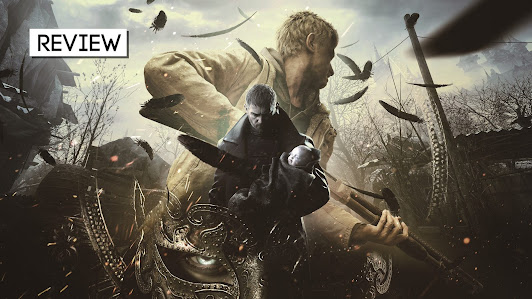Resident Evil Village: The Review
I remember vividly the first time I played one of my favorite games of all time, Resident Evil 4.
While not what I would call a huge fan of the survival horror series before then, I voraciously devoured every bit of Resident Evil 4 info I could get my hands on leading up to its January 2005 release. My dad, who heard no end of my excited explanations of the story and mechanics, surprised me one day with a rental copy from our local Hollywood Video. I settled in that night to finally experience the horror myself, and after running into my first Dr. Salvador, called my friend over to play it with me. It was a huge moment, one that reignited my love for video games and, in hindsight, more than likely helped me find the path to my current career.
I take this self-indulgent trip down memory lane because Resident Evil Village—releasing this Friday for everything but Switch—feels like Capcom’s attempt at remaking Resident Evil 4 without actually remaking Resident Evil 4. Despite a lack of real scares and an over-reliance on action over horror in its third act, Resident Evil Village is everything I wanted out of a new Resident Evil game. Combat is hefty and brutal, the monsters are unforgiving and relentless, and the set pieces are compelling enough to make up for some inconsistent pacing and difficulty. Moment to moment, Resident Evil Village consistently surprised me with its dips and turns, the way that first trip through Resident Evil 4 did.

The franchise’s eighth main installment in everything but name, Resident Evil Village directly follows the story of 2017’s Resident Evil 7. Ethan Winters, the everyman protagonist introduced in the previous game alongside its new, first-person perspective, has settled down somewhere in Europe with his wife Mia and baby daughter Rosemary, three years after surviving the swamps of Louisiana. Village opens with an intimate view of their new life together, but there’s a cryptic undercurrent of discord that cuts through their domestic bliss. The torture they endured at the hands of the mold-infected Baker family still looms large in their lives, a lingering trauma they can’t seem to shake.
Things take a turn before you’re given a chance to explore this dynamic. Someone riddles their home with bullets, and series mainstay Chris Redfield is revealed to be the orchestrator of the chaos. But this is a much different Chris than the one who contended with zombies in the original Resident Evil, punched boulders in Resident Evil 5, and most recently rescued the Winters in Resident Evil 7. Grizzled and imposing, Chris shoots Mia and kidnaps Rosemary, leaving Ethan begging for answers.
While Chris played a small, surprising role in the previous game, his introduction as a foil to Ethan in the opening of Resident Evil Village acts as a microcosm for the franchise. The series began its life taking down shambling zombies in 1996, but the threats soon became much more over-the-top. As such, so did its playable characters. Chris, who was barely more than SWAT in a small Midwestern town when he first entered the Spencer Mansion all those years ago, has since evolved into a near-superhuman figure in the Resident Evil universe. A normal dude like Ethan was inevitable and necessary when Resident Evil 7 ultimately returned the series to its less action-oriented, survival horror roots.
Resident Evil Village forces you to wrestle with that history by placing one of these mythical ur-protagonists as opposition long before any monsters make the scene. Ethan has been through his fair share of danger, but it’s nothing compared to Chris’ now decades-long history of saving mankind from potentially world-ending threats. How do you overcome a man whose legacy has routinely escalated to the point of being supernatural? It’s a clever way of raising the stakes without immediately relying on a new, more fantastical bioweapon, and serves as a promising jumping-off point for this new game.






Post a Comment